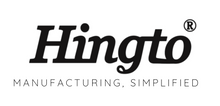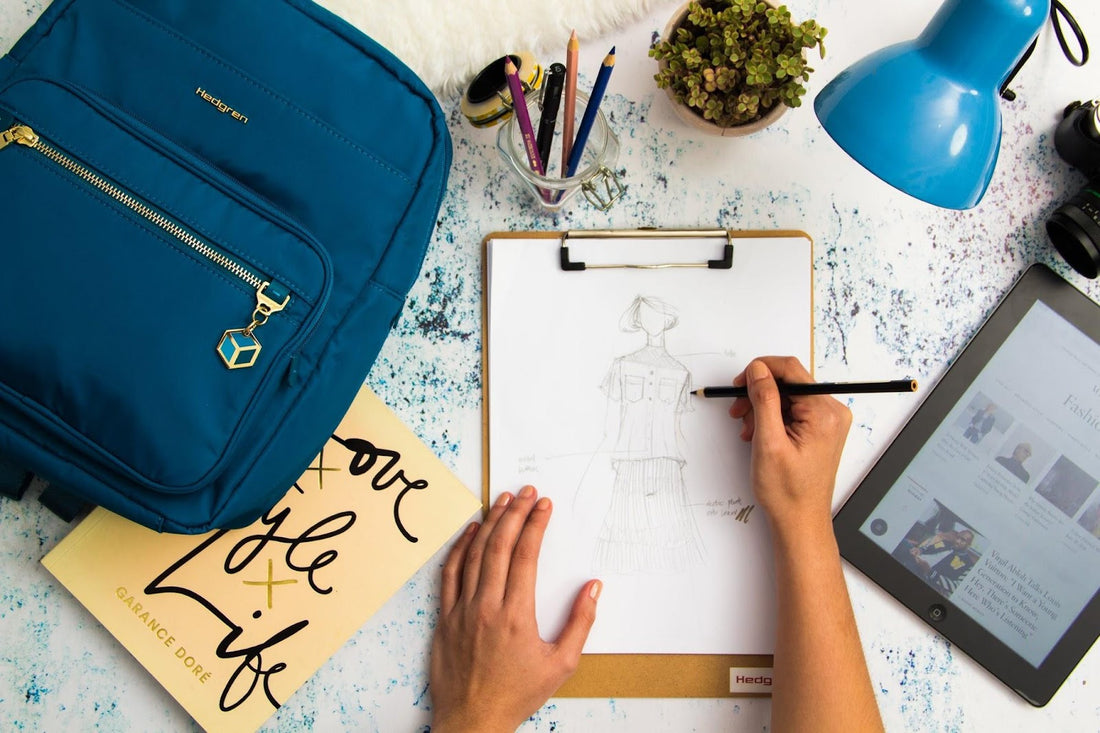1. Write a business plan
You may live and breathe creativity, but to be successful in the world of fashion you also need to nurture your business skills. In the beginning stages, this means writing a business plan that will help you achieve your goals.
There are many factors to consider when crafting a business plan for your fashion brand too. In particular be sure to get your financials right, including figures for your startup costs and where you will source capital.
Another issue that needs to be considered in your business plan is what parts of running your company you will do yourself, and what parts you will delegate and outsource. Of course, what you decide will have an impact on your costs. Yet, DIYing everything may not be the best idea, as your skills and passion may be better put to use on the creative side of things, making recruiting other professionals for the tasks you do not specialize in a sounder choice for the long term success of your business.
Finally, in your plan, you need to deceive the business model that you will be using. Consider whether you plan to design and craft, and sell your own collection directly or whether you are happy to use a clothing manufacturer like https://www.hingto.com/ to do this for you. Something that means you can then choose to sell your clothes directly or market them towards the wholesale market.
2. Identify your market
The great thing about fashion is that you don't have to appeal to everyone. Instead, success is based on finding your niche, that specific demographic or market of people that you are aiming to impress enough to part with their cash.
Market research is worth its weight in gold here, and before you start your fashion brand, making sure you clearly understand your demographic and your ideal customer is vital.
3. Build your brand
When it comes to starting a fashion brand, you will need to think way beyond just your company’s visual branding. Instead, your brand is all about distilling the essence of what your business stands for.
To do this it can be very helpful to define both your brand’s mission - that is what you are aiming to do with your fashion, and the values that will define how you go about this. Your values, In particular, are very helpful here. This is because they serve a dual purpose of not only helping guide every brand decision you make, (from your marketing choice to the colors you choose for your next line) but also providing a robust sense of identity that potential customers will be able to connect and resonate with, something that can help you forge lasting relationships in an already well-saturated market.
4. Design your garments
Once you have laid the business foundations for your fashion brand you can begin to embrace the creative side of the process. Indeed, for those starting a fashion brand, designing the garments, and patterns are simultaneously what they love to do and what motivated them to found their own business in the first place.
There are some things to consider when it comes to design too. For example, having a process that works for you is the most important thing. Whether that means using the latest tech like the Ipad Pro and Apple pencil or working from sketchbooks with handcrafted pencil drawings.
Additionally, there is no need to make any of the garments yourself, as there are ateliers and manufacturers that can handle this side of things for you. It is helpful to remember that there are advantages to crafting your own samples. Firstly you can see how the fabric drapes, and better judge whether your design is a success. Secondly, by understanding how the manufacturing process works, you will be in a stronger position to negotiate favorable terms with your manufacturer, as you will have a more accurate sense of what goes into crafting each garment.
5. Consider the seasons
When it comes to fashion, timing really is everything. What this means is that you will need to come up with suitable designs for both the spring-summer (SS) and autumn-winter (AW) seasons. It also pays to remember that preparation for each season needs to begin far in advance for you to have everything ready to go once the seasons come around.
6. Market your fashion brand
Happily marketing your clothes is a task that will be made infinitely easier, by having a robust brand to start with. The reason for this is by having a clear brand, with a defined ideal customer in mind, it's far easier to properly target your marketing to be effective. Something that can help you maximize sales and profits while also saving money.
In particular, be sure to consider influencer marketing, content marketing when you first launch, as they can be lower-cost options with a great ROI. Adverts in magazines and TV can also be effective, although it's likely you will want to hold off on such forms of marketing until your revenue streams are more established as they can be among the most expensive options.
7. Selling your clothes
Sell your clothes to retailers
One of your main goals in launching a successful fashion brand will be to sell your clothes. There is a great deal of work involved in this stage of running a fashion business, with the first decision to be made being how you will go about this.
Indeed, there are two main choices to consider when selling your clothing to retailers. The first is by consignment. This means you are allowed to sell your line in-store at a retailer's premises. However, they make no purchases from you directly, and that means you only get paid when an item sells. Many retailers love this option, especially if you are a newer brand on the block because it involves much less risk to them.
The other alternative is to offer your designs wholesale. Wholesale is when a retailer will buy your stock from you and resell them in their store. Of course, they will expect a discount for buying in bulk and so they can make a profit once they resell the items. However, it can be advantageous to your fashion brand because you can sell far greater volumes much more quickly, and you aren’t dependent on store sales to make any profits.
Of course, getting buyers to accept your designs either by consignment or as wholesale you need to get them in front of them first. Remember here that while this can be very competitive, being overlay aggressive is likely to put buyers off.
Instead, when pitching your line be sure to know every design inside out, as well as any other details they could ask. Winning them over with extensive knowledge during a pre-agreed time is far better than harassing them when you have no meeting booked.
Selling your clothes online
Another option for the fashion that you design is to sell it online. There are several benefits to doing this including lower overheads which can be particularly useful to those just starting. Not to mention that an online store is an ideal way to show a portfolio of your designs and fashions to potential buyers, both individual, and bulk.
With that in mind, making sure your website fits well with your brand, is easy to navigate, and user friendly is vital. The good news is that by using services that offer drag and drop websites, you can create a great-looking site without having to be able to code or be a professional graphic designer.
Although, when selling online, do remember that you will need a full end-to-end solution including shipping, packaging, returns facilities, and customer service to make your fashion brand a success.
Want more info or a tech pack designed for you? Get in touch with us here!

